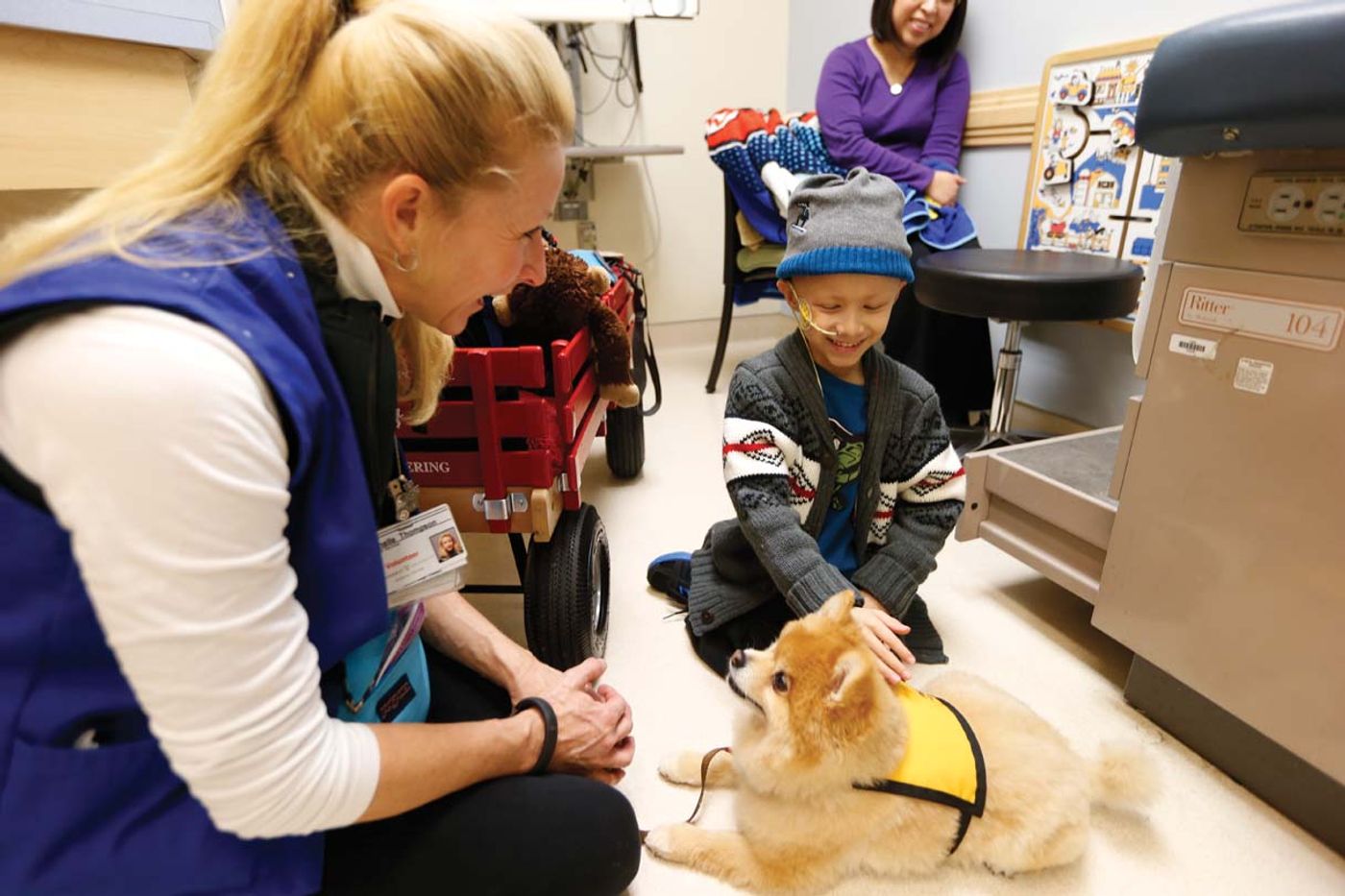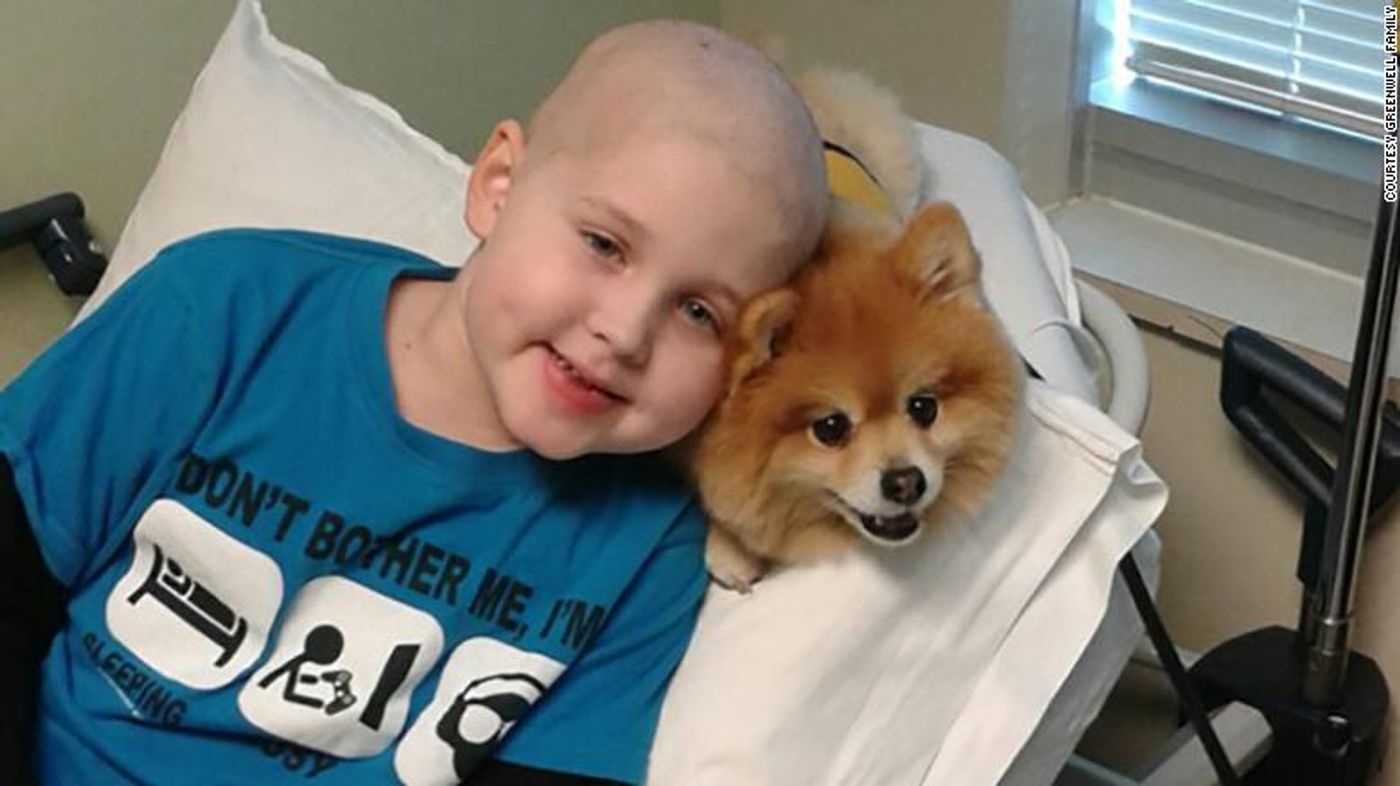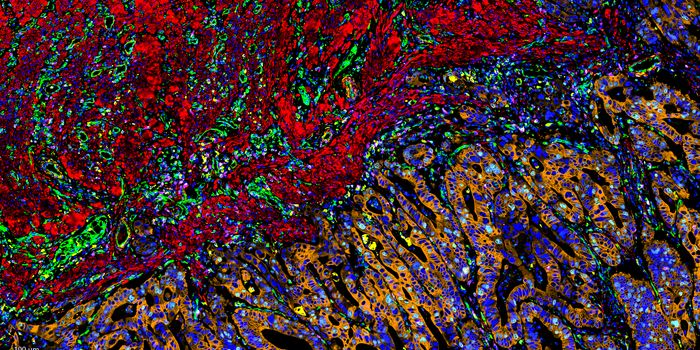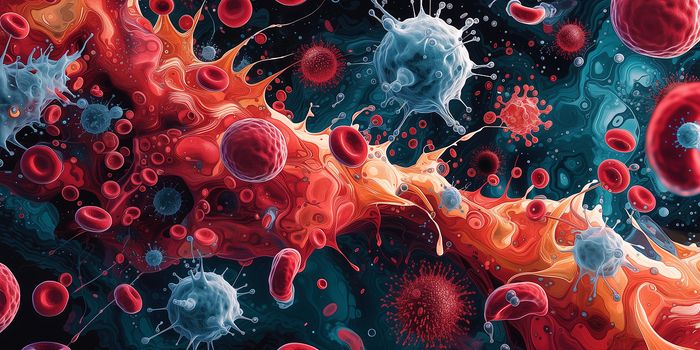Therapy Dogs Cheer Kids With Cancer
For children living with cancer, spending time with a therapy dog can provide both a fun distraction and a meaningful uplift. Having relationships and interactions with other species has been proven to offer a variety of health benefits for humans, including lowering anxiety, pain and loneliness and improving cardiovascular health. A study published in in the Journal of Pediatric Oncology Nursing in December 2017 set out to measure if spending time with a therapy dog can alter stress levels for young patients, their families and the dogs themselves.
The four-month study was the first randomized clinical trial exploring the benefits of Animal Assisted Interaction (AAI). Out of 106 children receiving pediatric cancer treatment in the study, 60 were paired with therapy dogs and 46 were not. Blood pressure and pulse measurements and a stress questionnaire were used to evaluate stress levels.
Pediatric hospitals in Nashville; Sacramento, California; Portland, Oregon; Tampa, Florida; and Boston participated. The study was sponsored by American Humane, with funding from the Human-Animal Bond Research Institute and global animal health company Zoetis.
Michelle Thompson has been the human half of a pet therapy team for six years. Her cohort, a 10-year-old toy Pomeranian name Swoosh, is beloved by 7-year-old Mitchell Montalbano and 9-year-old Bryce Greenwell. They have both undergone treatment for acute lymphoblastic leukemia (ALL), a common childhood cancer. They met Swoosh during the study and both developed strong bonds with him. In 2014, Swoosh won the Animal Medical Center’s Top Dog award.
"I think everyone should have a chance with Swoosh. Let them have the feeling that I once did. Nothing in words can describe how good it felt to see Swoosh again,” Bryce tells CNN. His mom Jenny explains that Bryce often takes anti-anxiety medication prior to his appointments, "But when he saw Swoosh, his anxiety level went down without the use of medicine.”
While the families give highly positive personal reviews of AAI, the study did not reveal a statistically significant difference between the groups of children who received dog-therapy and those who didn’t – they both experienced a reduction in stress over the period of the study. Some children experienced a rise in blood pressure after dog therapy. American Humane’s director of research Amy McCullough attributes this to the fact that they were more active while playing with the dog than the children in the control group, who were usually involved in more stationary activities like reading.
A significant reduction in parent stress for families undergoing dog therapy was a key finding. The study’s authors write that “significant improvements in parental stress and anxiety, namely communication and emotional distress, may positively affect the child with cancer, as well as family functioning and adjustment generally … ” The therapy dogs were not found to experience stress during the sessions. No negative incidents such as scratches or infections occurred during the study.
Mitchell’s family is very grateful to have met Swoosh. They report that he became withdrawn and morose after his initial cancer diagnosis. But Thompson says, “after their first visit with Swoosh, Mitchell started talking again, and he just talked about Swoosh constantly.” His Mom shares her surprise when her son asked to go to chemotherapy treatments, just so he could play with Swoosh. Mitchell encourages other children to use therapy dogs; “It would not make them scared anymore. I think they'd be happy."










